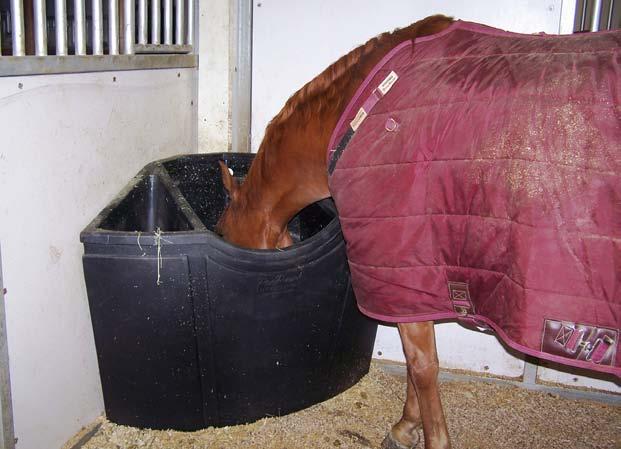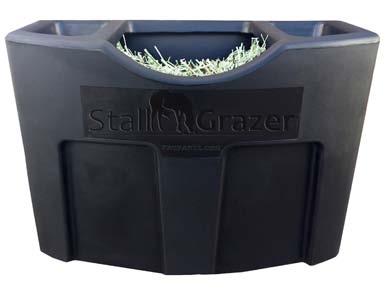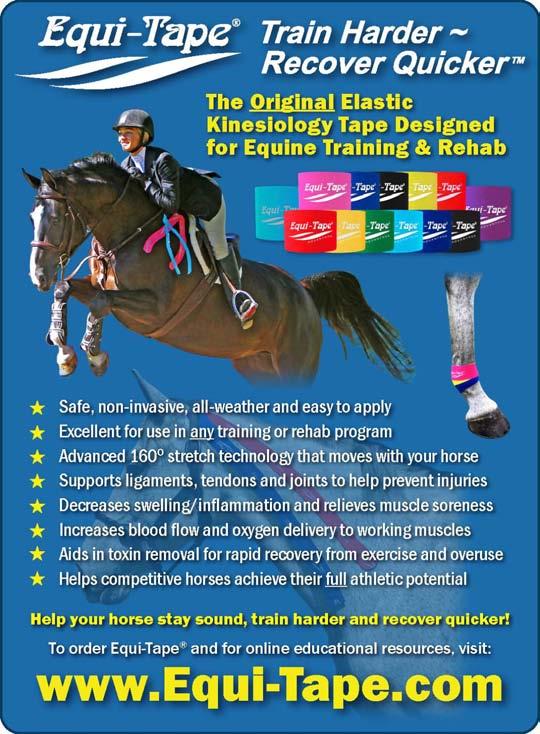
4 minute read
STALL Grazer
Unless you’ve been living under a rock, you’ve heard about the serious risks that Teff Hay has caused rid ers recently because it has been contaminated with synephrine. What can be done about it?
By Lisa Lazarus
Advertisement
If you are involved in any capacity in horse sport, you are most certainly aware of the Equine Prohibited Substances List (EPSL) and could probably name many of its forbidden substances. Naturally, stakeholders expect that this list will be limited to those substances which are harmful to horses and/or performance-enhancing. Most would also expect the listed substances to be synthetic and never present in a horse’s natural environment, especially in hay. But this is exactly what happened in the case of synephrine even though it could not have been anticipated by the FEI, EPSL Group members or any of its stakeholder groups.
Nine years on from its inclusion in the first ever EPSL, the number of Adverse Analytical Findings (AAFs) reported for synephrine has soared. But this is not a sign of a doping epidemic within equine sport. Instead, these AAFs have been linked to the consumption of Teff grass hay – a plant which naturally contains synephrine in some parts of the world. As such, it would seem that a solution must be forthcoming to address this issue and protect innocent individuals from provisional suspensions, disqualification of results, and accusations of cheating.
Synephrine is a compound found naturally within certain plants, including the Common rush and the leaves of citrus trees. It is part of a group of chemicals termed “alkaloids” – compounds which are used by plants to defend themselves against predators and often used by humans for their me dicinal properties.
WHAT IS SYNEPHRINE?
Although the effects of synephrine have never been studied in horses, research in humans indi cates that it has weak “adrenergic” properties (meaning it stimulates adrenaline release and thus increases heart rate and blood pressure). As such, the FEI has presumed synephrine can act as a stimulant in horses and included it on the EPSL as a Banned Substance.
More specifically, synephrine is classified as a “Specified Substance” within the Banned Substanc es, meaning that the FEI accepts there is a likelihood for it to be ingested for reasons unrelated to improving sports performance. This provides the FEI with a greater deal of flexibility when dealing with AAFs involving synephrine. For example, the FEI are not obliged to impose provisional suspensions on Riders when their horses test positive for synephrine, although they can if they deem it appropriate. The FEI has used this discretion and has generally chosen not to suspend riders whose horses test positive for Synpehrine, which has been a welcome re sponse for those riders impacted.
If synephrine was a proven stimulant and/or health hazard for horses, and its natural presence within a horse’s environment was rare, then I am sure there would be no debate as to its inclusion within the EPSL. However, a growing amount of research is starting to emerge showing this is not the case. If such research can be expanded, the FEI may be persuaded to remove it from the EPSL.
HOW DO WE SOLVE THE SYNEPHRINE CRISIS?
One thing everyone is agreed upon is that we can not stop all equestrian sports in Mexico, South Africa and any other country determined to be affected by synephrine. Instead, the most sensible approach is to make a compelling case to remove synephrine from the EPSL altogether. Such a change would be in the best interests of stables and riders, by allowing healthy horses to legitimately compete whilst protecting individual’s reputations from the damage associated with an AAF. In addition, there is a strong argument that these changes are in the best interests of the FEI as the current synephrine caseload is a drain on resources and removing it would allow the FEI to focus more time on genuine doping concerns. But until that happens, do not feed your horse Teff Hay if it is competing in FEI competition! At a minimum, be sure to withdraw your horse from Teff Hay several days before competing in order to be safe and not sorry.
NATURE Intended Stall Grazer Horse FeedersFEEDING HORSES the way
Why Buy Stall Grazer Horse Feeders?
Stall Grazer Horse Feeders provide a natural alterna�ve for feeding your horses! It’s like having a pasture in your stall.
As horse owners and competitive rider’s we transplanted horses from their natural environment into barns, box stalls and pens with little consideration of how the horse is designed to eat. In nature or on a pasture, horses will eat for approximately 17 hours each day slowly ingesting forage with the head down and the teeth aligned the way nature intend ed.
Our Stall Grazer family of 3 in 1 horse feeder’s sit at ground level allowing your horses to eat comfortably with their head down and hold enough hay that your horse is never without feed, slowing the feed intake down dramatically. This slow consumption allows the horse to digest their feed properly and reduces pro duction of acid on an empty stomach.
Stall Grazer Horse Feeders are used by more Equine Professionals, Veterinary Universities and Professional Horse Trainers than any other horse feeder in the world! Please visit our web site for more information at www.stallgrazer.com or call 1-833-Grazers


10% OFF SALE VIEW UPDATED WEBSITE TODAY 10% OFF SALE
See our ad on the back cover.













